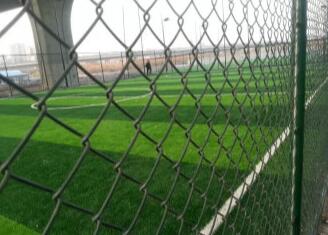The Versatility and Applications of Pierced Metal Panels
Pierced metal panels have emerged as a popular architectural and design element, blending functionality with aesthetic appeal in various applications. These panels, characterized by their perforated designs, offer an array of benefits that can enhance both traditional and contemporary settings. From commercial buildings to artistic installations and even industrial applications, pierced metal panels are growing in prominence for their versatility and innovative potential.
Definition and Design
Pierced metal panels are typically made from materials such as aluminum, steel, or stainless steel and can be fabricated in multiple shapes and sizes. The process involves perforating the metal sheet, creating patterns that can vary from simple geometric designs to intricate custom motifs. This customization enables architects and designers to create unique visual statements that can complement or contrast with surrounding environments.
The design possibilities are virtually endless, allowing for creativity and individuality. Some common patterns include circular holes, squares, or even customized shapes like leaves or abstract forms. The choice of design can influence not only the visual impact of the panel but also its functionality, such as light permeability, acoustic performance, and ventilation.
Functional Benefits
One of the primary advantages of pierced metal panels is their functionality. The perforations allow for natural ventilation and light penetration while maintaining a degree of privacy. This feature makes them particularly appealing for use in building facades, where they can help regulate temperature and sunlight exposure, thus contributing to energy efficiency.
Moreover, these panels can enhance acoustic performances. In urban environments, where noise can be a significant issue, pierced metal panels can help absorb and deflect sound, creating a more pleasant indoor atmosphere. This acoustic control makes them an excellent choice for buildings that house offices, schools, or residential units.
Aesthetic Appeal
Apart from their functional benefits, pierced metal panels offer significant aesthetic value
. They can transform a dull facade into a striking work of art, contributing to the overall visual narrative of a space. The interplay between light and shadow created by these panels can add depth and dimension to architectural designs, capturing the eye of passersby and enhancing the experience of those within the space.pierced metal panels

In addition to their application in buildings, pierced metal panels are increasingly used in interior design. From decorative room dividers to ceiling embellishments, these panels can add texture and character to an interior space, making them a favored choice for both commercial and residential projects.
Applications Across Industries
The application range of pierced metal panels spans several industries. In the commercial sector, they are often used in retail spaces, office buildings, and cultural institutions. Their ability to allow light diffusion while preventing direct glare makes them an ideal solution for creating inviting environments.
In the industrial realm, pierced metal panels are used in machinery housing, safety screens, and equipment enclosures—providing protection while ensuring airflow and visibility. The automotive and aerospace industries also utilize these panels for weight reduction without compromising structural integrity.
On a more artistic note, sculptural installations featuring pierced metal panels serve as captivating public art. These installations can evoke emotional responses, convey messages, or highlight the natural landscape, demonstrating the intersection of art and architecture.
Sustainability Considerations
As the world turns to more sustainable practices, pierced metal panels are also making headway in eco-friendly design. The materials used in their production can often be recycled, and their ability to facilitate natural light and air flow contributes to sustainable building practices. By reducing the reliance on artificial heating, cooling, and lighting, these panels assist in minimizing a building's carbon footprint.
Conclusion
In summary, pierced metal panels represent a harmonious blend of form and function. Their versatility makes them suitable for a wide range of applications, from commercial and industrial uses to artistic endeavors. With their ability to enhance aesthetic appeal, improve functionality, and contribute to sustainability, pierced metal panels are poised to remain a staple in modern architecture and design. As innovative technologies and design philosophies continue to evolve, the potential for these panels is limited only by our imagination.

















